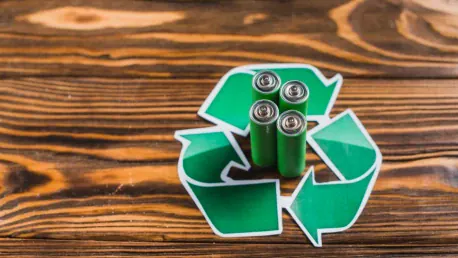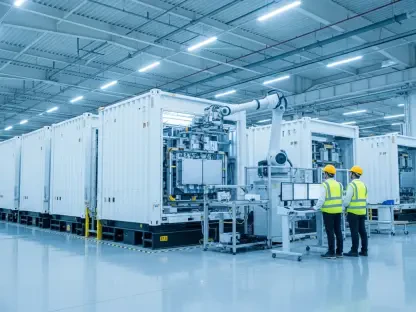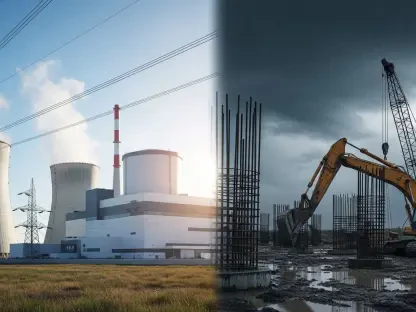The rise of electric vehicles (EVs) has brought about a significant shift in the automotive industry, driven by the need for sustainable transportation solutions. However, the increasing adoption of EVs has also led to a growing concern over the management of used lithium-ion batteries (LIBs). This article delves into the dual strategies of recycling and repurposing these batteries, exploring their environmental and economic impacts, potential benefits, and associated challenges.
The Surge in Electric Vehicle Adoption
Government Incentives and Market Growth
The rapid increase in EV sales is largely fueled by government incentives and ambitious decarbonization goals. Projections indicate that EV sales will rise by 25% to 17.1 million by 2024, with the market expected to exceed $1 trillion in volume by 2028. These incentives are designed to make EVs more accessible to consumers, thereby accelerating the transition to cleaner transportation. Governments around the world are offering significant subsidies and incentives for both manufacturers and consumers in a bid to foster the widespread adoption of electric vehicles. For instance, tax rebates, cash-back offers, and grants for infrastructure development have made it economically feasible for many to transition from traditional internal combustion engine vehicles (ICEVs) to EVs. These incentives ensure that financial barriers are minimized, making the leap to greener transportation a more attractive and attainable option for the average consumer.
Resource-Intensive Production
Despite their environmental benefits, EVs require a significant amount of critical minerals for their production. Compared to internal combustion engine vehicles (ICEVs), EVs need six times more minerals like lithium, cobalt, copper, nickel, manganese, and graphite. This resource-intensive production process results in a higher environmental footprint, underscoring the importance of sustainable battery management practices. The extraction and processing of these minerals are not only labor-intensive but also have significant environmental repercussions. For example, mining for lithium and cobalt involves considerable land disturbance and water usage, often leading to detrimental effects on local ecosystems. Furthermore, regions rich in these critical minerals are often politically unstable, raising concerns about the reliable and ethical sourcing of the essential raw materials needed for EV production. Thus, balancing the benefits of reduced emissions during EV use with the environmental footprint during production is a critical challenge that the industry must address.
The Lifecycle of Lithium-Ion Batteries
Exponential Growth in Usage
The demand for LIBs has surged due to the electrification of vehicles and the rise of renewable energy generation. This exponential growth has led to an increased need for critical materials, which are becoming scarce. The supply of these materials is expected to fall short of demand before the decade’s end, raising concerns over environmental, economic, and human rights issues. The mining and manufacturing processes for these materials often take a toll on the environment and local communities. For instance, cobalt mining in the Democratic Republic of Congo has been linked to significant human rights abuses, including child labor and dangerous working conditions. The rapid growth in demand for these batteries means that the supply chain has to ramp up its output substantially, often at the cost of ethical sourcing and environmental considerations.
Environmental Impact of Battery Production
The production of LIBs has a substantial environmental impact, including high water usage, energy consumption, and greenhouse gas emissions. Recycling these batteries can mitigate these effects by reducing the need for new raw materials and lowering the overall environmental footprint of EVs. The environmental benefits of recycling are significant; for example, a lifecycle analysis conducted by Stanford University concluded that recycling lithium-ion batteries results in less than half the greenhouse gas emissions of traditional mining and uses only one-fourth the water and energy. Additionally, recycling defective scrap materials can further amplify these benefits by efficiently recapturing and reusing valuable materials that would otherwise go to waste. Effective recycling practices could potentially alleviate some of the environmental burdens associated with the current battery production process while also addressing some of the issues related to the scarcity of critical raw materials.
Recycling Electric Vehicle Batteries
Environmental Benefits of Recycling
Recycling LIBs offers significant environmental benefits. A lifecycle analysis by Stanford University found that recycling has less than half the greenhouse gas emissions of traditional mining and uses only one-fourth the water and energy. These benefits are even greater when defective scrap materials are recycled, highlighting the potential of recycling to reduce the environmental impact of EVs. By incorporating recycled materials into new batteries, manufacturers can reduce their reliance on virgin raw materials, thus mitigating the negative environmental impacts associated with mining. Furthermore, recycling can help close the loop in the battery lifecycle, fostering a more circular economy where materials are continually reused rather than disposed of after a single use. This cyclic approach not only conserves precious natural resources but also reduces landfill waste and environmental degradation.
Challenges in Battery Recycling
Despite its benefits, battery recycling faces several challenges. The location of recycling facilities, their energy sources, and transportation distances all play a crucial role in determining the environmental benefits of recycling. Efficient recycling processes are essential to address long-term supply insecurity of critical battery minerals and to maximize the positive impact on the environment. Many existing recycling facilities are not located near major battery manufacturing hubs, leading to increased transportation costs and associated carbon emissions. Additionally, the energy sources used by these facilities can also affect their environmental footprint. Recycling facilities powered by renewable energy are more sustainable than those relying on fossil fuels. However, transitioning to cleaner energy sources involves substantial investment and infrastructure changes.
Repurposing Electric Vehicle Batteries
Second-Life Applications
Repurposing EV batteries for second-life applications can extend their lifespan and support a circular battery economy. Batteries that no longer meet performance requirements for EVs can be repurposed for lower-power uses, such as stationary battery storage or mobile systems. This practice is gaining traction, with the second-life EV battery market projected to reach $4.2 billion by 2035. Second-life applications are diverse and can include using these batteries for home energy storage systems, where they can store excess power generated from renewable sources like solar or wind. This stored energy can then be used during peak demand times or power outages, providing a reliable and sustainable energy solution. Additionally, repurposed EV batteries can be used in smaller-scale commercial or industrial applications, further extending their utility and value.
Economic and Logistical Challenges
While repurposing offers numerous benefits, it also presents economic and logistical challenges. The cost of battery components, delivery logistics, and disassembly processes can be significant barriers. Addressing these challenges is crucial to making second-life batteries competitive and maximizing their value. For instance, dismantling EV batteries is a labor-intensive process that requires specialized equipment and expertise. Any damage to cells during disassembly can pose risks or render the batteries unsuitable for repurposing. The delivery logistics of transporting these heavy batteries to repurposing facilities add another layer of complexity and cost. Furthermore, the market for second-life batteries is still emerging, and standardization is lacking, which can create additional challenges in terms of compatibility and integration into existing systems.
Regulatory Landscape and Future Trends
Government Policies and Incentives
Regulations and policies play a vital role in promoting battery recycling and repurposing. Governments are beginning to establish frameworks to facilitate second-life applications, such as the EU Battery Passport, which tracks battery lifecycles, and Extended Producer Responsibility (EPR) policies that promote battery collection and recycling. These initiatives are essential for creating a supportive environment for sustainable battery management practices. EPR policies, for example, make manufacturers responsible for the entire lifecycle of their products, encouraging them to design more sustainable batteries and to invest in recycling and repurposing infrastructure. Meanwhile, the EU Battery Passport aims to increase transparency in the battery supply chain, ensuring that batteries are ethically sourced, used efficiently, and disposed of responsibly.
Innovations and Strategic Planning
Technological advancements and strategic planning are key to overcoming the challenges associated with battery recycling and repurposing. Innovations in battery grading and disassembly technologies are reducing costs and improving efficiency. Additionally, the strategic location of recycling facilities and the use of cleaner energy sources are critical to maximizing the environmental benefits of these practices. For instance, new methods in automated disassembly can help streamline the recycling process, making it faster and more cost-effective. Battery grading technologies, which assess the health and performance of used batteries, can help determine their suitability for second-life applications, thus optimizing the reuse of these valuable resources. Strategic planning includes setting up recycling facilities closer to battery manufacturing hubs to decrease transportation costs and emissions, as well as integrating renewable energy solutions to power these facilities, further reducing their environmental impact.
Global Trends and Initiatives
Leading Efforts in Battery Management
The United States, Europe, and China are at the forefront of battery recycling and repurposing efforts. A growing number of companies and projects are dedicated to these practices, driven by the need for sustainable solutions and regulatory support. These global trends highlight the importance of continued innovation and collaboration in the battery management sector. In the United States, companies like Tesla and Redwood Materials are pioneering efforts in both battery recycling and the creation of closed-loop supply chains. Europe, with its stringent environmental regulations, is home to several initiatives aimed at improving battery sustainability, including the European Battery Alliance and the Lithium-ion Battery Recycling Project. Meanwhile, China has implemented robust EPR policies, and companies like CATL are investing heavily in battery recycling technologies.
The Path to a Circular Economy
The rise of electric vehicles (EVs) has brought about a significant transformation in the automotive sector, primarily motivated by the need for more sustainable transportation solutions. As EVs become increasingly popular, managing used lithium-ion batteries (LIBs) has become a growing concern. This topic delves into the dual strategies of recycling and repurposing these batteries, evaluating their environmental and economic impacts.
Recycling LIBs involves breaking down the batteries to extract valuable materials like lithium, cobalt, and nickel. This approach helps reduce the need for mining, which has its own environmental downsides. However, the recycling process can be costly and energy-intensive, posing economic and logistical challenges. On the other hand, repurposing LIBs involves using them in new applications once they are no longer suitable for EVs. These repurposed batteries can be utilized for energy storage in renewable energy projects or backup power in various settings. Repurposing can extend the lifespan of LIBs and provide affordable energy solutions. Both strategies present potential benefits and challenges. Recycling contributes to resource conservation and waste reduction, while repurposing offers cost-effective and inventive uses for old batteries. Ultimately, finding a balance between these approaches is critical for the sustainable adoption of electric vehicles.









